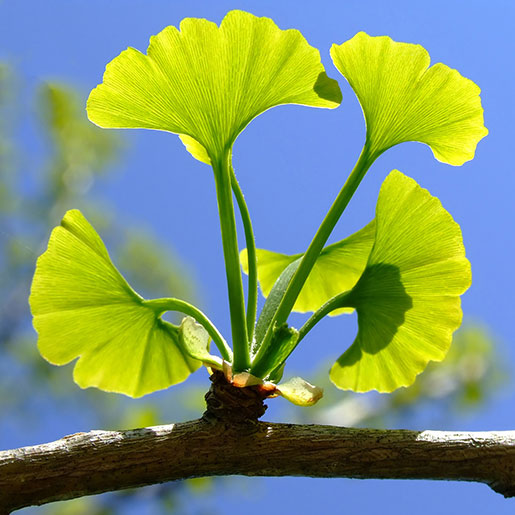Ginkgo biloba L. leaves contain important bioactive compounds, including flavonoids, organic acids, and terpenoids, and extracts from the plant have traditionally been used in medicine. Recently, Ginkgo biloba extracts have garnered renewed attention for their potential benefits, particularly in protecting the skin by mitigating aging processes and offering benefits against conditions like inflammatory diseases. Many skin care products currently incorporate these extracts.
Conventionally, extracting these bioactive compounds involves methods like maceration or solid-liquid solvent extraction, often relying on organic solvents such as ethanol, methanol, or acetone. However, these traditional techniques suffer from several limitations, including low efficiency, long processing times, and low selectivity. Crucially, the use of organic solvents raises environmental and safety concerns, as many are toxic and harmful, and residual traces may contaminate the final extract. To overcome these issues and enhance sustainability, innovative green extraction technologies were developed, leading to the consideration of Natural Deep Eutectic Systems (NADES). NADES are composed mainly of primary metabolites (like sugars, amino acids, and organic acids) and offer enhanced extraction efficiency while providing a low-toxicity, biocompatible, and biodegradable alternative. Their alignment with Green Analytical Chemistry (GAC) and Green Sample Preparation (GSP) principles positions NADES as a safe, sustainable solution for extracting and stabilizing bioactive compounds for incorporation directly into final formulations, such as cosmetics.
Methods
This study evaluated three hydrophilic NADES for their efficiency in extracting bioactive compounds from milled, dry Ginkgo biloba L. leaves via a heating/stirring solid-liquid extraction method, comparing results against a conventional hydro-alcoholic (50:50 v/v EtOH:H2O) extraction. Extracts were characterized for Total Phenolic Content (TPC) using the Folin–Ciocalteu method and antioxidant activity via the DPPH assay, alongside identification and quantification of compounds by LC-MS/MS. The safety and efficacy of the extracts were assessed through cytotoxicity testing in HacaT keratinocytes and evaluation of Reactive Oxygen Species (ROS) inhibition induced by H2O2 and UV light. Finally, the greenness of the NADES method versus the conventional method was assessed using AGREEprep and ComplexMoGAPI tools, and the long-term stability of the most promising extract was monitored over 360 days [2, 15f, 37, 47].
Key Findings
• The NADES LA:Glc:W (Lactic acid:Glucose:Water) was the most effective extraction medium, achieving the highest TPC extraction yield (19.93 ± 1.58 mg GAE/g DW), which surpassed the conventional solvent extract (16.57 ± 1.06 mg GAE/g DW).
• LA:Glc:W also demonstrated the highest antioxidant activity, shown by the lowest EC50 value (0.23 ± 0.02 g/mL), comparable to the conventional extract (0.24 ± 0.05 g/mL).
• Chemical characterization confirmed quinic acid and shikimic acid as the predominant compounds identified in the extracts. LA:Glc:W significantly outperformed the conventional solvent in extracting quinic acid (226,509 ± 22,651 μg/g DW versus 104,263 ± 10,426 μg/g DW).
• The extracts showed no cytotoxicity towards HacaT keratinocytes up to 50 mg/mL.
• The NADES-based extracts were effective at inhibiting ROS formation after induction by both H2O2 and UV light, highlighting their potential for skin care applications. The Bet:Suc:Gly:W extract showed particularly strong ROS inhibition and protected cells from resulting damage.
• The Bet:Suc:Gly:W extract exhibited stability over 360 days, maintaining consistent TPC and antioxidant activity, suggesting suitability for long-term storage in natural skincare formulations.
• Assessments using AGREEprep and ComplexMoGAPI confirmed that NADES-based extraction is a significantly greener, safer, and more sustainable alternative compared to the conventional Ethanol:H2O approach, reducing waste, energy consumption, and the use of hazardous reagents.
This study successfully demonstrated the potential of NADES as an eco-friendly, sustainable, and efficient alternative to conventional organic solvents for extracting and stabilizing bioactive compounds from Ginkgo biloba leaves.
The novelty lies in the ability to tailor NADES composition (specifically, incorporating organic acids) to not only achieve superior or comparable extraction efficiency for key phenolic compounds like quinic acid and TPC compared to conventional methods but also to confer superior stability to the resulting extracts. Furthermore, the rigorous application of green analytical tools (AGREEprep and ComplexMoGAPI) provides quantifiable evidence supporting the enhanced greenness and safety of the NADES method over traditional extraction, eliminating the need for complex, energy-intensive purification steps.
The future implications of this research are broad, highlighting the potential for NADES-based extracts to be directly integrated into dermocosmetic applications. The high stability of the Bet:Suc:Gly:W extract makes it a highly promising candidate for formulations requiring long-term preservation. Moreover, these findings open opportunities for the use of NADES in other health-related fields, including food and pharmaceuticals, seeking environmentally conscious methods for extracting and stabilizing valuable phytochemicals.
Link to the study: https://tinyurl.com/3sjxhu2y

